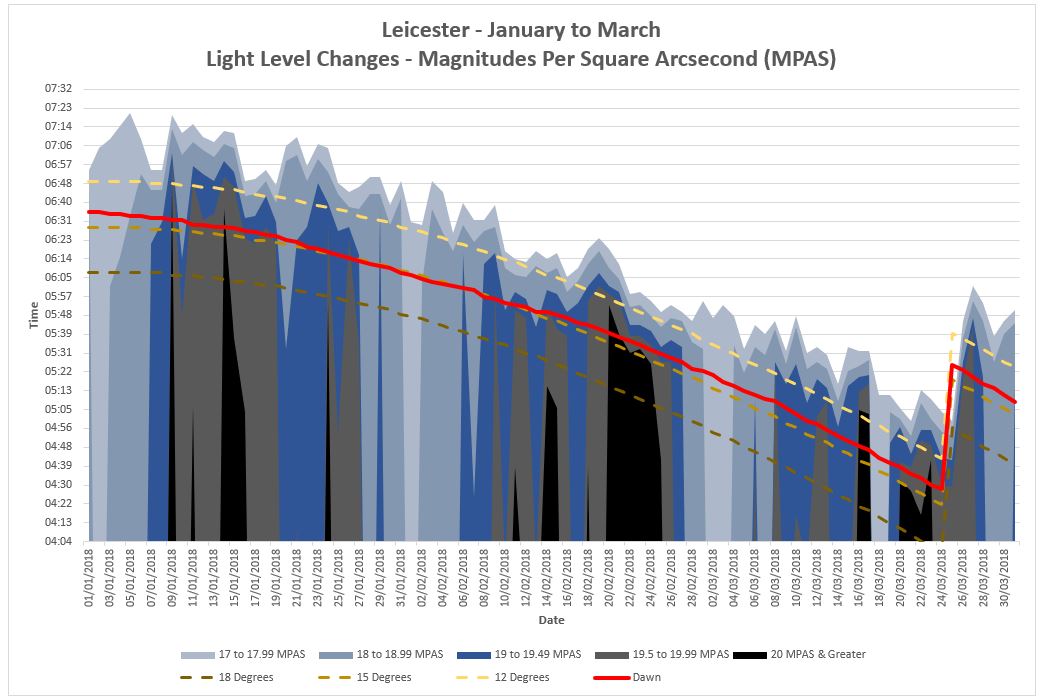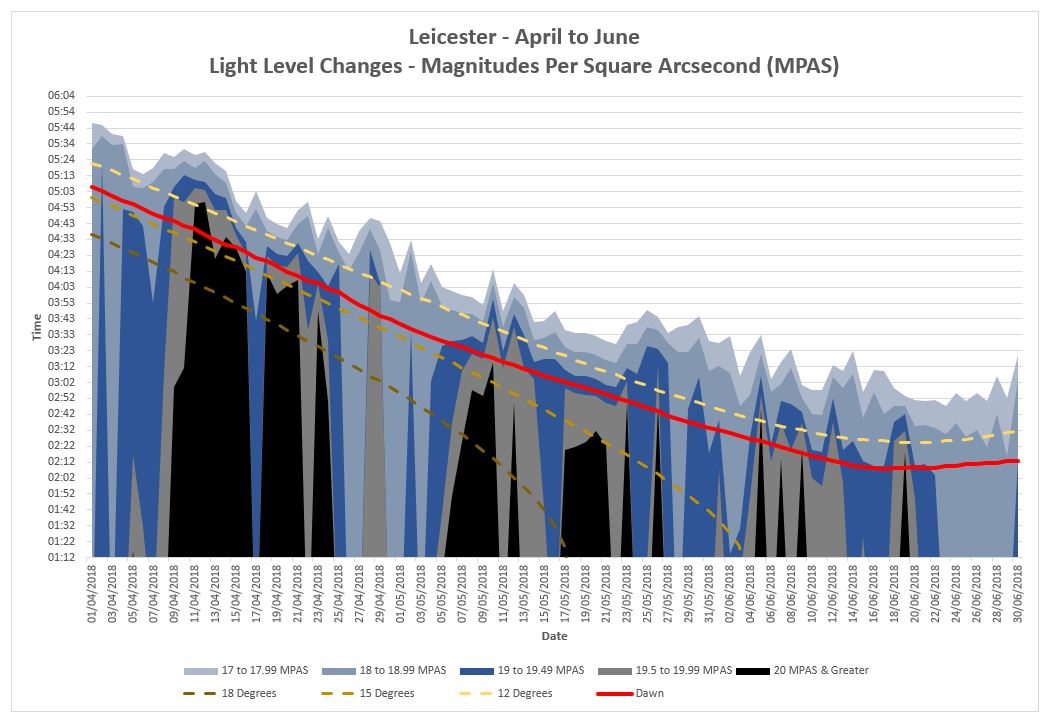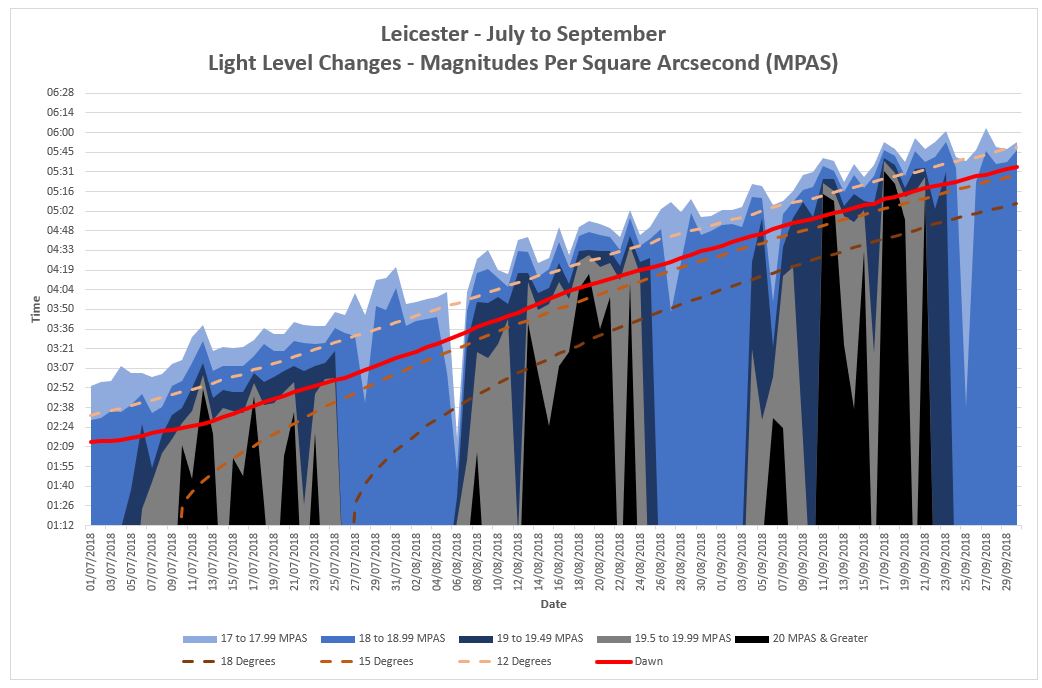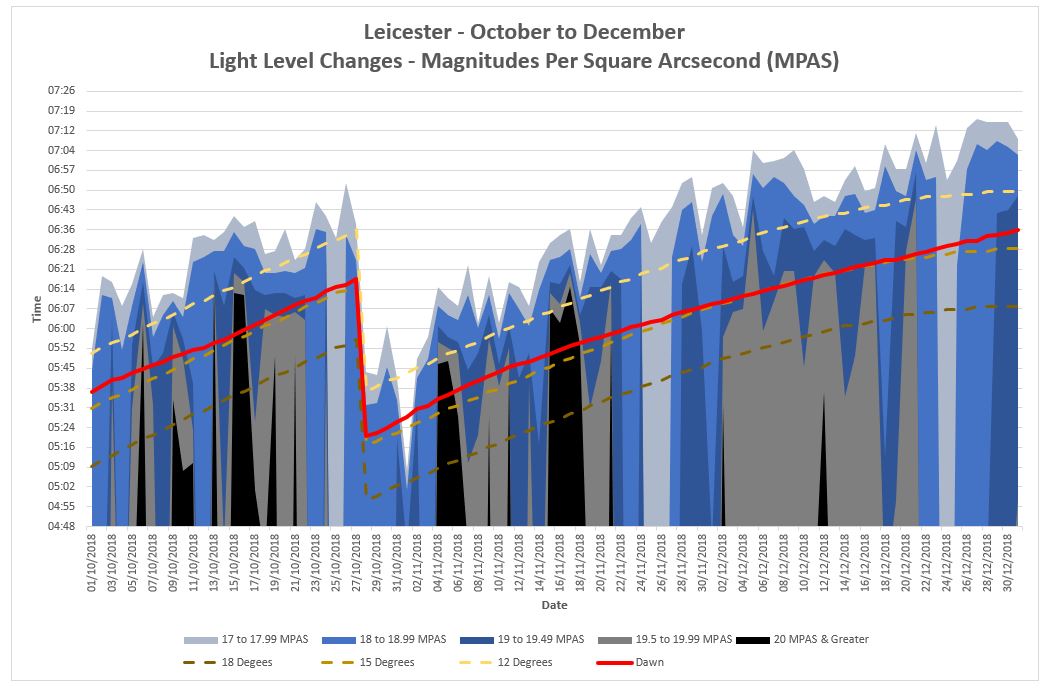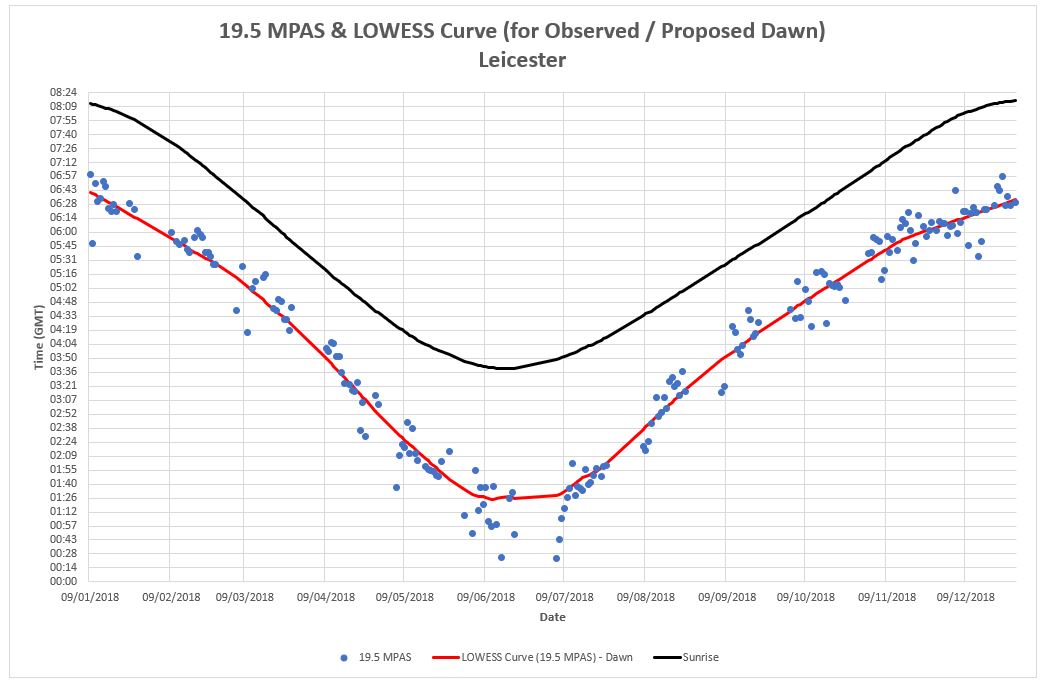Alongside logging the first point at which the light levels change (Tipping point), the continuous data logging of light level readings (magnitudes per square arcsecond - MPAS) from sunset to sunrise the following morning, allowed the study to track the changes twilight during the transit of the sun.
The SQM measures the brightness of the night sky in magnitudes per square arcsecond (MPAS). This is a logarithmic measurement where large changes in sky brightness correspond to relatively small numerical changes. This allows for illumination changes to be measured on a simple scale and attributed as follows:
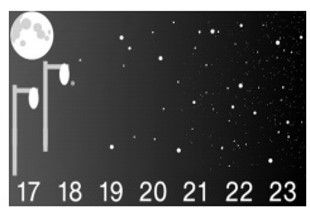
From the data logged, we were able to see the changes in the MPAS reading leading up to dawn for the full year. The following charts only show the following:
- MPAS reading of 20 and greater, considered to be night where the sky is very dark. The maximum MPAS reading logged by the project was 21.92
- 19.5 to 19.99 MPAS - The band in which the majority of naked eye observations for Subh al-Sadiq (dawn) occurred.
- 19 to 19.49 MPAS - From supporting observations, the period after Subh al-Sadiq (dawn) where the light on the horizon grows
- 18 to 18.99 MPAS
- 17 to 17.99 MPAS
The following charts show the changes in the twilight as the sun approaches the horizon as coloured areas. The sun depression angles of 18°, 15° and 12° is also shown as dotted lines.
There are periods where the twilight is bright (17 to 19 MPAS), this is the middle days of the lunar month where the moonlight increases the ambient light. These dates can be ignored.
For our purposes of establishing when dawn is most likely to be occurring supported by observations and the tipping point information, on these charts is the top points of the grey areas (19.99 to 19.49 MPAS) and dark blue areas (19.49 to 19 MPAS) is where Subh al-Sadiq (dawn) seems to occur.
The red line is the proposed time for Subh al-Sadiq (dawn) supported by observations and the data logged. The LOWESS function has been applied to time given by 19.49 MPAS to produce these times for Subh al-Sadiq (dawn).
[Click Image to Expand]
During this first quarter (Jan to Mar), for the non-middle lunar month days the sky remains dark (black / grey area) after the sun reaches the depression angle of 18°. It is period between 15 and 12° where the light levels begin to change and are in the reading levels associated with naked eye observations and tipping points (Top of grey areas crossing into dark blue). The proposed dawn times are shown as the red line.
[Click Image to Expand]
During this second quarter (Apr to Jun), for the non-middle lunar month days the sky remains dark (black / grey area) after the sun reaches the depression angle of 18°. It is period between 15 and 12° where the light levels begin to change and are in the reading levels associated with naked eye observations and tipping points (Top of grey areas crossing into dark blue). As we approach the summer solstice (shortest night), the grey / dark blue MPAS areas is closer to 13°. The proposed dawn times are shown as the red line.
[Click Image to Expand]
During this third quarter (Jul to Sep), for the non-middle lunar month days the sky remains dark (black / grey area) after the sun reaches the depression angle of 18°. It is period between 15° and 12° where the light levels begin to change and are in the reading levels associated with naked eye observations and tipping points (Top of grey areas crossing into dark blue). As we move beyond the summer solstice (shortest night), the grey / dark blue MPAS areas is goes from around 13° to closer to 15°. The proposed dawn times are shown as the red line.
[Click Image to Expand]
During this last quarter (Oct to Dec), for the non-middle lunar month days the sky remains dark (black / grey area) after the sun reaches the depression angle of 18°. It is period between 15 and 12° where the light levels begin to change and are in the reading levels associated with naked eye observations and tipping points (Top of grey areas crossing into dark blue). The proposed dawn times are shown as the red line.
The continuous data logging allowed the project to gather amongst other data all days when the light level readings reached 19.49 MPAS, the reading at which Subh al-Sadiq (dawn) was most commonly observed. Disregarding those middle days of the lunar month where the moonlight increases the ambient light and anomalous readings, the project was able to establish 208 days of the year (57%) from which the LOWESS function was applied to give the proposed Subh al-Sadiq (dawn) for this project (and seen above as the red line on the 4 charts).
The following chart shows 19.5 MPAS readings and the resulting LOWESS curve. All times have been shown in GMT. During British Summer Time (BST) plus one hour is added to all times shown.
[Click Image to Expand]
What the light level analysis shows:
- There is no fixed point at which dawn can occur.
- Subh al-Sadiq (dawn) can occur at any time within a period (maximum and minimum point)
- Light Level data indicates dawn occurs much later than 18°
- Light Level data indicates that Subh al-Sadiq (dawn) does not occur before 15° (maximum)
- Any Subh al-Sadiq (dawn) time between 15° (maximum) and 13° (minimum) seems supported by the light level data
- During the summer period the light level reading show Subh al-Sadiq (dawn) depression angle as low as 12.69°
- During the winter period the light level reading show Subh al-Sadiq (dawn) depression angle to up to 14.77°

